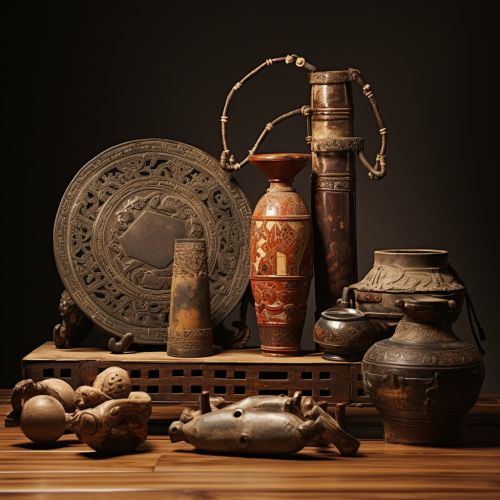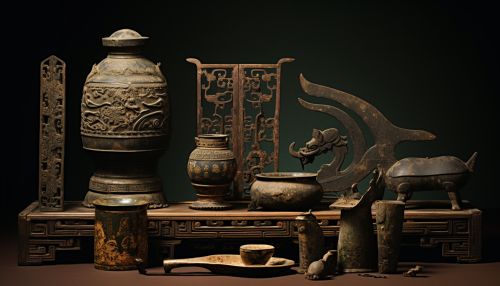Culture of China
Introduction
The culture of China is one of the world's oldest and most complex cultures, with a history spanning thousands of years. The vast region of China has a profound diversity of ethnicities, cultures, and languages. This diversity has led to a multitude of cultural expressions and traditions, which are deeply rooted in the history, philosophy, and very essence of the Chinese people.
History
China's cultural history dates back at least 20,000 years, as evidenced by the discovery of the earliest known pottery in the world, found at the Xianrendong and Diaotonghuan archaeological sites. The Neolithic period in China, which began around 10,000 BCE, saw the development of sophisticated agricultural practices and the rise of the first complex societies.


Language
The Chinese language is a key component of Chinese culture. It is part of the Sino-Tibetan language family, and its written form has been in use for over 3,000 years. The language is known for its complexity and richness, with thousands of characters and a tonal pronunciation system. The standard form of Chinese, known as Mandarin, is the most widely spoken language in the world.
Philosophy and Religion
Chinese philosophy and religion play a significant role in the culture. The three main philosophical schools of thought, Confucianism, Taoism, and Buddhism, have deeply influenced Chinese culture, shaping its social structure, education system, and moral guidelines. Confucianism, in particular, has played a crucial role in shaping Chinese society's emphasis on family, respect for elders, and the value of education.
Literature
Chinese literature is one of the major literary heritages of the world, with an extensive collection of books, poems, and scholarly works. The Four Great Classical Novels of Chinese literature, including "Romance of the Three Kingdoms", "Journey to the West", "Water Margin", and "Dream of the Red Chamber", are renowned for their profound cultural significance and artistic value.
Art
Chinese art encompasses a wide range of mediums, including painting, calligraphy, sculpture, ceramics, architecture, and more. Traditional Chinese art often carries a significant cultural or philosophical meaning, with a strong emphasis on harmony, balance, and the beauty of nature. The Chinese painting style, known for its brushwork and use of ink, is one of the oldest continuous artistic traditions in the world.
Music and Dance
Chinese music and dance have a long history, with distinctive regional and ethnic differences. Traditional Chinese music, often associated with poetry and painting, has a serene and elegant quality that reflects the country's philosophical outlook. Chinese dance, on the other hand, is a highly varied art form, consisting of many modern and traditional dance genres, such as the lion dance, dragon dance, and Yangge.
Cuisine
Chinese cuisine is renowned worldwide for its sophistication and diversity. The styles of cuisine are based on the different regions of China, including Cantonese, Szechuan, Hunan, and Shandong, among others. Chinese cuisine is known for its emphasis on fresh ingredients, color, aroma, and taste.
Society and Lifestyle
Chinese society is structured around a strong sense of community and family. The traditional Chinese lifestyle, influenced by Confucianism and Taoism, emphasizes harmony, balance, and respect for authority and elders. Modern Chinese society, however, is a blend of traditional Chinese culture and Western influences, reflecting the country's rapid economic and social changes.
Conclusion
The culture of China is a rich tapestry of history, philosophy, art, and tradition. It is a culture that values harmony, balance, and respect for authority and elders. Despite the rapid changes in modern Chinese society, the core values and traditions of Chinese culture remain deeply ingrained.
